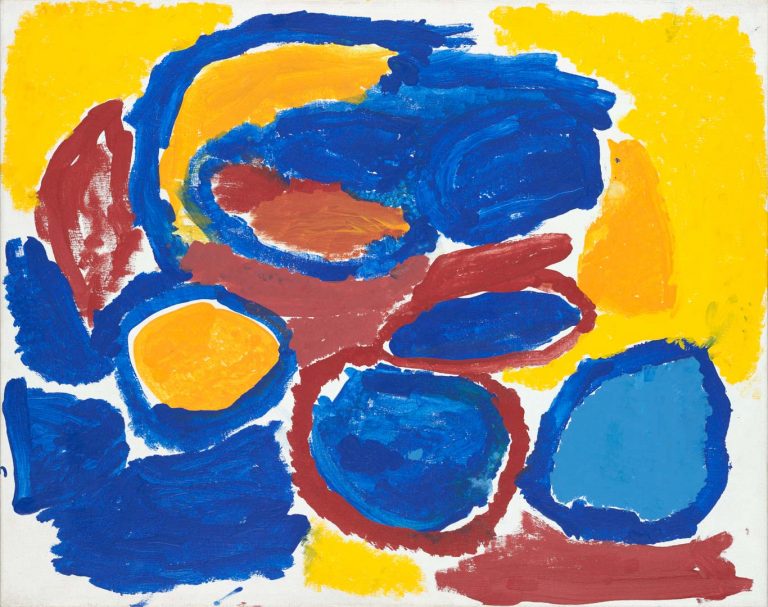We acknowledge the Traditional Owners of the land on which the Queensland Art Gallery | Gallery of Modern Art stands and recognise the creative contribution First Australians make to the art and culture of this country.

Mirdidingkingathi Juwarnda Sally Gabori / Kaiadilt people / Australia c.1924–2015 / My Country 2005 / Synthetic polymer paint on canvas / 60 x 76cm / Gift of the Estate of Mirdidingkingathi Juwarnda Sally Gabori through the Queensland Art Gallery | Gallery of Modern Art Foundation 2017 / Collection: Queensland Art Gallery | Gallery of Modern Art / © Mirdidingkingathi Juwarnda. Licensed by Copyright Agency, 2020.
Mirdidingkingathi Juwarnda Sally GaboriMy Country 2005
Not Currently on Display
The ‘My Country’ (Mirdidingki) paintings celebrate Sally Gabori’s birthplace, the small creek that runs from inland Bentinck Island to a small bay on the southern coast, facing towards the massive rivers of the mainland Gulf coast.
Inland, saltpans emerge, while at the creek’s edges mangroves dominate, becoming a heavily forested tidal estuary at its mouth. Halfway along the creek, a small but striking midden-encrusted island devoid of vegetation emerges from the mangroves — a piercing circle of white among the green trees. Nearer the mouth of the creek a branch extends to the east along the back-beaches of the bay, creating an area of density in an otherwise sparse land. The creek ends in a long sandy tidal flat that extends into the bay for hundreds of metres, then transforms into a vibrant network of connecting coral reefs teeming with turtles, fish and other sea life.
Sally Gabori’s paintings of Mirdidingki often include strong linear icons at their centre, referencing the creek there, while others depict either the tree she was born under, the places loved ones are buried, the sand flats where shell fish are collected, or the camp site and middens where shells amassed over millennia.
Mirdidingkingathi Juwarnda Sally Gabori (c.1924–2015) came to painting at the age of 81. She was one of a handful of leading artists from Indigenous communities who worked in a bold personal style outside the established traditions of painting country. Others include Emily Kame Kngwarreye, Ginger Riley, Makinti Napanangka, Wakartu Cory Surprise and Nora Wompi.
Gabori is widely acclaimed for her vibrant use of colour depicting the intimate connections between the Kaiadilt people of Bentinck Island, their country and their history.
For her first 23 years, she moved between her family’s main homeland sites, living according to her unbroken ancestral culture. Then, in 1948, following devastating drought, storms and a near 4-metre tidal surge, she and her kin were moved to nearby Mornington Island.
Gabori returned to Bentinck Island whenever possible and maintained a strong connection to her Kaiadilt country through language, song and storytelling, all of which she incorporated into the act of painting.